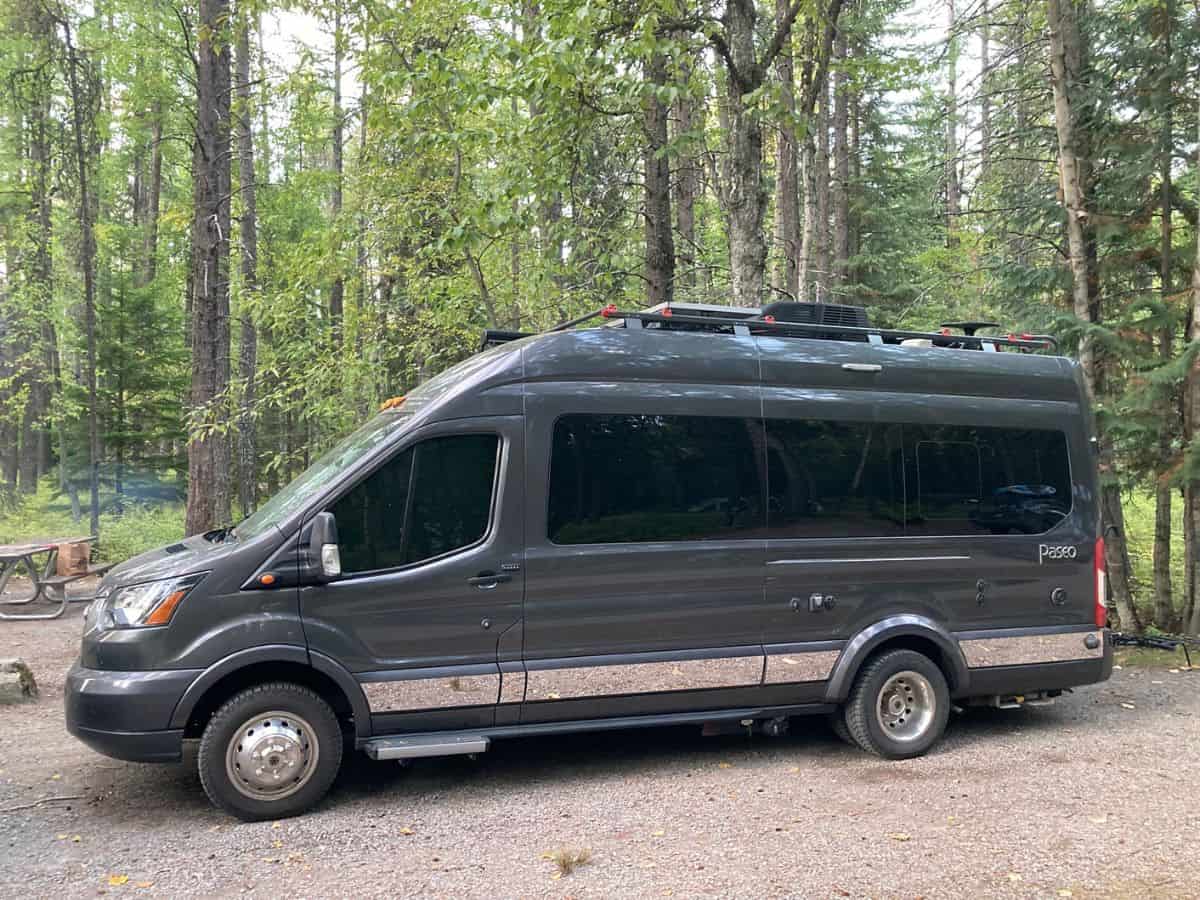After reading countless blogs and watching scores of YouTube videos, James and his wife took the plunge last year and moved into a compact 21-foot Class B RV to travel and live full-time.
“Our friends thought we were crazy,” James recalled. “Most people could barely imagine spending a weekend in such a tiny motorhome let alone living in one permanently.”
“We just felt starved for adventure,” he explained. “And we figured why not trade rent payments for road trips?”
After the initial excitement wore off though, I was curious if James ever started questioning if they’d made the right choice.
“Oh absolutely,” he confessed. “Just simple things like emptying the toilet and living in such a cramped space can wear on you.
However, when I asked if he would recommend full-time Class B living to others, Jake enthusiastically responded:
“If you’re up for challenging yourself, I’d say go for it! Just make sure you properly prepare and know it may take some time to adjust.”
I wrote this blog post because I know there are a lot of would-be Jameses out there who feel stuck in their lives and looking for a change as well.
Unfortenly for most, unlike James, they never end up taking the plunge, and instead, the dream of RV living stays just a dream.
So I thought to help those on the fence and dreaming of #vanlife, that I would break down all the ins and outs of full-time Class B RV living.
Can You Live Full-time in a Class B RV?
Class B RVs, also known as camper vans, are typically no more than 25 feet long — making them the smallest motorhome available.
Their tiny size and maneuverability are perfect for weekend adventures and temporary living.
But can these small motorhomes truly serve as a viable full-time home?
Many RVers considering Class B life often ask if living full-time in such a compact motorhome is truly practical or sustainable.
While it certainly comes with unique challenges and adjustments, most experienced Class B owners say the lifestyle is completely doable with the right expectations, preparation, and adaptations.
To ensure Class B RV living is a success long-term they also say it helps to:
- Choose a layout optimized for storage and multi-function use.
- Travel to warmer climates and regions during the winter months.
- Install insulation upgrades if snowbirding isn’t possible.
- Have access to a storage unit for overflow belongings, if you’re having trouble downsizing.
- Leverage outdoor space for additional living and storage.
- Modify layouts to better suit your needs.
- Embrace a simpler lifestyle with fewer possessions.
- Creatively organize your limited belongings.
- Embrace a minimalist mindset.
While existing full-timers acknowledge Class B limitations, most agree the boosted freedom, adventure, and minimalist benefits make the adjustments worthwhile.
With the right expectations and adaptations, living practically — and happily — in a Class B RV full-time is absolutely achievable.
Breaking Down the Pros and Cons of Full-Time Class B Living
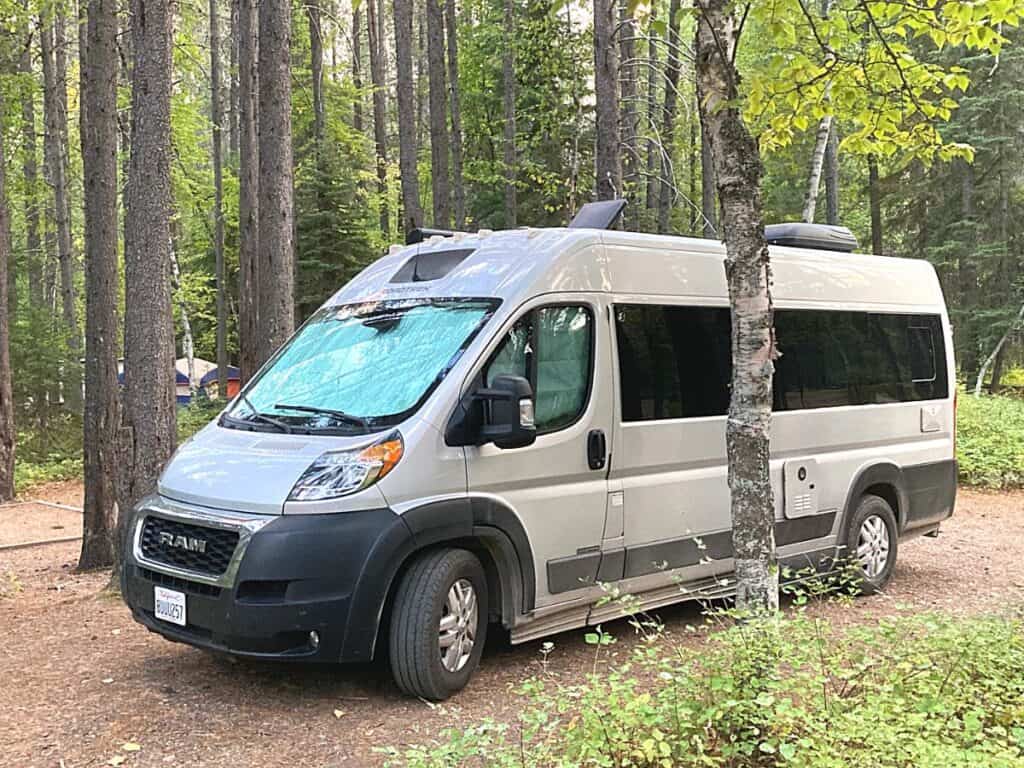
While the small size and maneuverability of Class B RVs can unlock an adventurous full-time RV lifestyle, their compact dimensions also come with challenges.
So before committing to living permanently on the road in one of these tiny motorhomes, it’s important to fully understand the unique pros and cons of making a Class B your full-time home.
Pros of Full-Timing in a Class B RV
- Compact Size – The compact size of Class B RVs makes them extremely nimble adventure rigs. They can fit in normal parking spaces, drive like a van, and access many off-grid campsites. This makes travel, parking, and boondocking a breeze.
- Better Gas Mileage – A lighter, smaller RV like a Class B motorhome gets far better fuel economy than its larger counterparts, saving money at the pump. Expect to get anywhere from 15 to 22 MPG.
- Adventure Lifestyle – Class B RVs deliver that sought-after adventurous lifestyle full-time RVers crave. Their maneuverability and off-grid capabilities let owners explore more remote places.
- Teaches Minimalism – Adjusting to tight quarters demands paring down possessions and embracing minimalist living. For those looking to declutter, Class B life forces you to adopt a simpler lifestyle.
Cons of Full-Timing in a Class B RV
- Limited Interior Space – One of the biggest cons for Class B full-timers is the very limited indoor living space. Tight quarters can create storage challenges and strain even the best of relationships.
- Difficulty Staying Cool and Warm – Lacking ample insulation, cooling, and heating sources, can make it challenging to stay comfortable, which is why most van lifers move with the seasons seeking milder climates.
- Ongoing Maintenance – More frequent driving plus compact design leads to increased wear and tear. Expect higher maintenance costs and hassles than “stationary” RVs.
- Lack of Privacy – Between cramped dimensions and rarely being alone, those needing more privacy may struggle full-timing in a tiny home with a partner or family.
- Bathroom Accommodations – Most Class B motorhomes have small wet baths with a combined toilet/shower. This can make it challenging to get ready and use the facilities, especially if two or more people are sharing the bathroom.
- Limited Sleeping Capacity – Class B RVs often only offer two-person sleeping capacities although some models do offer four. This can make it challenging for small families to enjoy the lifestyle.
What Do You Need to Live Full-Time in a Class B RV?
Deciding to become a full-time RVer is no small life change. And committing to life in a tiny, adventure-sized Class B motorhome adds another layer of logistical considerations.
So to set yourself up for success living permanently on the road in a camper van, it’s important to first realistically assess if you have the below four key prerequisites in place.
Requirement One: Class B RV Capabable of Permanent Living
Its critical to choose a Class B model with a layout suited for long-term living.
That means considering factors like insulation, cooling and heating systems, electrical capabilities, storage space, bathroom facilities, and sleeping capacity.
Selecting the right floorplan and RV model from the start makes full-timing much more feasible.
Requirement Two: Financial Means or Remote Income Source
Life on the road still carries a monthly cost.
So it’s important to determine a way to fund your lifestyle through retirement savings, remote work/passive income stream, rental properties, or a hybrid approach before committing to full-time Class B living.
Requirement Three: Flexible Lifestyle Not Tied to One Location
Embracing the Class B life means continuous travel and adapting to new terrains, climates, and communities frequently.
If you require routine stability in one geographic area for work, healthcare, or other commitments, then the on-the-go RV lifestyle may prove challenging.
Requirement Four: Adaptability & Resourcefulness
To thrive in a small home on wheels long term, you must solve problems creatively as they arise with storage, weather, mechanical issues, and local-specific challenges.
Resourcefulness, flexibility, and the ability to adapt are a must to handle RV life curveballs, which is not a question of if, but when.
What to Look for When Choosing a Class B RV for Full-Time Living
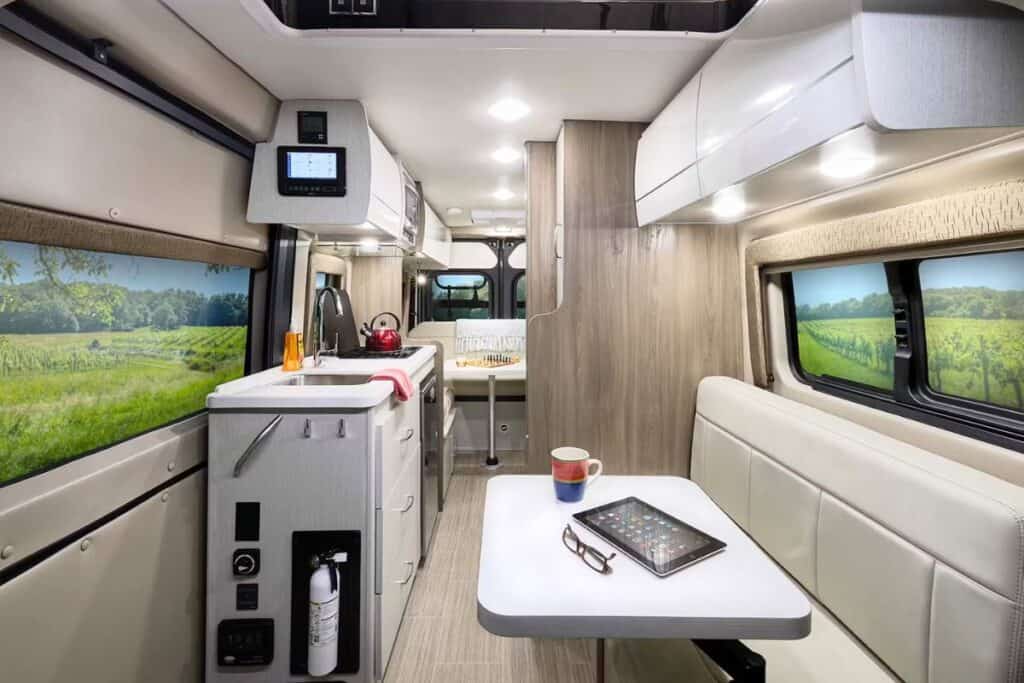
While adaptable minimalists can make just about any Class B layout work for full-timing, certain factors make small-space living easier.
So I thought I would break down the key elements to consider when selecting and outfitting a Class B RV for comfortable long-term living.
Suitable Floorplan
When it comes to camper van floorplans there is no one-size-fits-all due to the various needs and wants of different RVers.
However, a commonality that all the best layouts share is adaptability, functionality, and utility.
So you want to choose a floor plan with multi-functional spaces like swivel cab seats, modular dining tables, Murphy beds, and storage benches.
Sufficient Insulation, Cooling, & Heating
Without ample insulation and an efficient cooling and heating system, staying cool in the summer and warm through the winter can be difficult.
So you want to look for a four-season Class B RV with the highest R-value insulation, a roof-mounted AC, and a robust furnace.
Also, if you plan on living in below-freezing temperatures you need to choose a van rated for cold weather to prevent tanks and pipes from freezing, like the Winnebago Revel or the Winnebago Ekko.
Galley Essentials
While galleys shrink in Class B kitchens, ensure at minimum a functional sink, propane or induction cooktop, a convection microwave, and the biggest refrigerator you can find.
It’s also important to choose a Class B RV with good-size holding tanks (fresh, gray, black), as this will allow you to live off-grid for longer.
Basic Bathroom Functionality
While some full-time van lifers choose to skip the bathroom and just use public facilities and gyms for showers, in my opinion, if you plan to live full-time in a Class B a small bathroom with a toilet, sink, and shower is essential.
Look for units with well-laid-out wet baths with handy features like water savers, on-demand water heaters, built-in mirrors, exhaust fans, and multiple storage cubbies.
Advanced Power System
Fully embracing off-grid living is essential for any Class B full-timer. A built-in or portable generator in my opinion is a must.
Plus, it’s also nice to have ample solar power, high-capacity AGM or lithium batteries, a large-capacity inverter, and ample power and USB outlets spread throughout the coach to keep everything powered and charged.
Creative Storage Solutions
Between built-ins, space-saving organizers, and multifunctional furniture, well-designed storage is mandatory for making limited square footage livable.
Seek and add specialized RV storage solutions to fully maximize the storage potential inside the campervan.
What Does it Cost to Live Full-Time in a Class B?
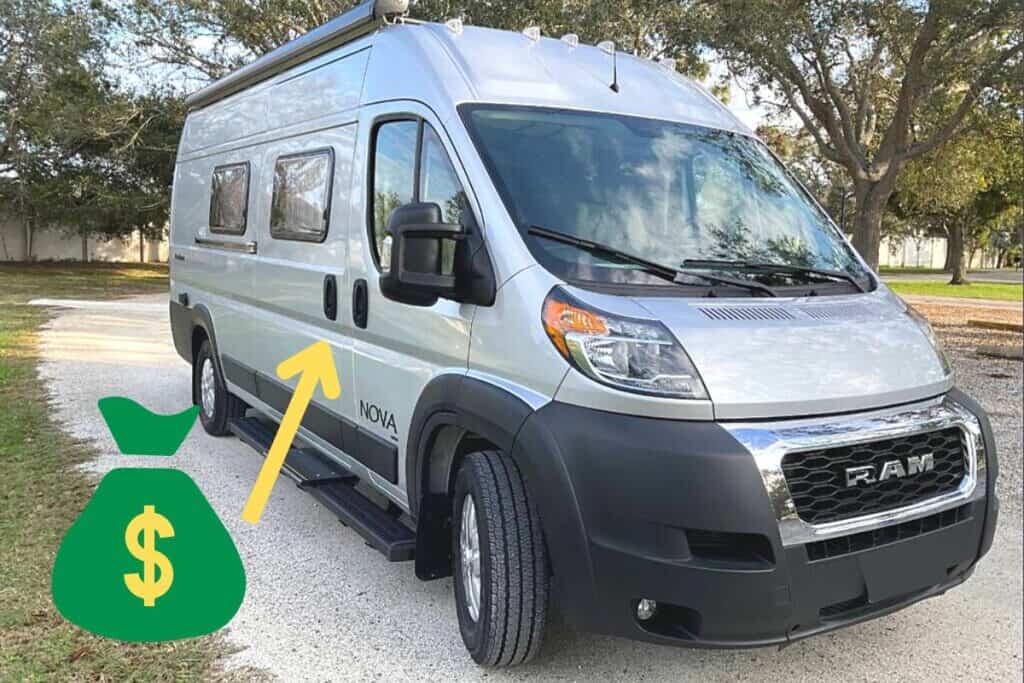
When considering joining the ranks of full-time Class B life, one of the most common questions is how much will it cost.
To answer this question, we analyzed detailed budgets from current Class B owners to provide realistic monthly cost breakdowns.
Expenses fall into six main categories:
RV Payment
Often one of the biggest expenses for most full-time RVers is their RV payment, and this holds true for vanlifers.
This is because the cheapest new Class B RVs usually start at just under $100,000 and can easily cost well over $150,000 for a mid-tier Class B RV, like the Thor Sequence or the Winnebago Travato.
If you plan to buy used this will save you some money, but for used rigs less than 10 years old, you should still expect to fork out somewhere between $50,000 and $60,0000.
So what does this all mean for the cost of a Class B RV and its monthly payment?
While you can finance an RV in most cases for up to 10 years, which will help reduce the payment amount, unless you have a sizable down payment you should expect the payment to range somewhere between $1,000 to $1,500 a month.
Campground & Campsite Fees
Unless you plan to mostly boondock on BLM or forestry land, your next biggest expenses beyond the cost of the RV will be campground and campsite fees.
For full-timers, having a safe place to park and power up becomes your new monthly “rent” and finding affordable options factors heavily into budgeting.
Most Class B dwellers pay between $500 – $1,500 per month on campground and boondocking sites based on their lifestyle and route.
However, the figure can quickly balloon, if you’re staying at luxurious or more premium campgrounds and campsites.
Main Factors that Affect Monthly Campground Fees
- Public vs Private Campgrounds: Public parks with electric/water hookups average $25-$50 nightly, equaling $750-$1,500 monthly. More amenities at luxury private campsites push averages closer to $60+ nightly or $1,800 per 30 days. Weekly and monthly rates and membership discounts can often help defer some of the cost though.
- Peak Season & Event Pricing: Like hotels, campground pricing fluctuates based on peak vacation seasons and nearby happenings/holidays. Sites fill up quickly and go up in cost significantly during summer months and when major events are happening.
- Boondocking Savings: Those comfortable with “dry camping” can utilize free public land, Walmarts, and truck stops to save significantly on camp fees.
- Destination & Route: Cost of living expenses, including campsite fees change by region. For example, you should budget more for full-time wintering in south Florida compared to boondocking in the deserts out west.
Fuel Costs
Thanks to the improved gas mileage compared to larger motorhomes, like Class A and Class C RVs, most Class B owners report spending between $150-300 monthly on fuel, depending on their mileage and driving habits.
Factors that Affect Fuel Costs
- RV Miles Per Gallon – Since Class B vans are built on van chassis like Ford Transits, RAM ProMasters, and Mercedes-Benz Sprinters, they can achieve 15-22 miles per gallon. This can vary though, depending on the size and weight of the coach and how the RV is driven.
- RV Mileage – Obviously, the more miles driven, the more fuel is required, which can quickly push costs upwards. For example, if you plan to spend weeks or months at each destination you will spend far less on fuel costs compared to those that are constantly on the move.
- Generator Use – Many Class B RVs come equipped with built-in generators that run off the van’s fuel supply to provide power while living off-grid. Depending on your power usage and the amount of time you plan to live off-grid can have a big impact on fuel usage.
- Type of Fuel – Some Class B vans have diesel engines which require more expensive diesel fuel. In addition, premium Class B RVs and engines will often recommend or require premium fuel, which can also add considerable cost.
- Regional Variances – The cost of fuel also shifts by state and region. Mountain west states currently have the highest prices while southern states offer more modest rates.
Insurance Costs
Insurance costs can vary significantly for full-time RVers depending on several key factors, including the age and price of the RV, the type of coverage you opt for, and the owner’s driving record.
The level of protection also impacts pricing, as policies with comprehensive and collision coverage or lower deductibles cost more per month.
With so many personal variables at play, RVers should compare multiple full-time insurer rates before deciding.
On average though, RV insurance policies adequate to cover full-timers usually range from $100 to $250 monthly.
Maintenance Cost
The near-constant movement of life on the road adds increased wear and tear to RVs, especially compact Class B motorhomes subject to continuous driving.
Between regular fluid changes, tire rotations, mechanical diagnostics, and potential repair bills, expect to budget a good amount yearly for upkeep costs to keep your tiny home in working order.
On average, you should plan on spending around $1,000 to $2,000 annually for basic preventative maintenance like oil changes and tire replacements plus potential issues that often creep up during extended travel.
Extra Costs
In addition to basic living expenses, full-time Class B dwellers need to account for a variety of other monthly and occasional extra costs that pop up as part of full-time RV living.
These can include, cellular and data plans for internet access on the road, which can cost $60-150 monthly for cell service depending on the plan and provider, and an additional $150 a month if you want Starlink.
In addition, things like upgrading solar setups, installing new flooring, or adding other gear to customize your tiny home also add up incrementally.
Plus, things like dining out, entertainment expenses, and shopping are all easy to rationalize when adapting to a brand-new locale every few weeks.
For all these odds and ends, make sure to pad an extra $500 or so monthly in your calculations.
Adding It All Up
So adding all these numbers up, what can the average full-time Class B RVer expect to spend a month?
Well, if you were hoping that vanlife was going to afford you considerable savings over more traditional living these numbers are probably going to shock you, as there is nothing cheap about living life on the road.
When tallying all of the average Class B monthly living costs, you can expect to spend anywhere from $2,500 on the low end to as much as $5,000 on the high end.
That being said though there are always outliers to this.
For example, if you buy an old work van for cash and convert it into a basic home on wheels and stay on nothing but free public land, you might be able to spend as little as $1,000 a month.
On the other hand, if you buy an ultra-premium Airstream Class B RV and stay at nothing but high-end luxury campgrounds you could spend well over $5,000 a month.
What are the Best Places for Full-Time Class B RV Living?
When setting out to live full-time in a Class B RV, one of the biggest on going concerns is figuring out where to go and where to stay.
So we created this list highlighting the most popular states and regions for full-time vanlife.
Best States for Class B Living
Florida
- 12 Months of Temperate Weather
- Endless Coastline Destinations
- Huge Network of RV Resorts
Texas
- Massive State with Tons of Open Space
- Desert Warmth Great for Winter
- Few Extreme Weather Events
Arizona
- Dessert Boondocking Freedom
- Hundreds of BLM & National Forest Sites
- Winter Warmth, Summer Heat Mitigated (Dry Heat)
California
- Diverse Climate Zones
- Unmatched Natural Beauty and Quaint Coastal Towns
- LA & Bay Area Metros Nearby
Oregon
- Rainy Winter Months and Warm Summer Months
- Scenic Coastal Routes and Mountain Town Adventures
- Hundreds of State Park/Forest Camps
Best Regions
- Southeastern Coast
- American Southwest
- Pacific Northwest
What Makes These Areas Ideal?
From warmer climates to plentiful parking opportunities, these RV havens offer the best mixture of benefits for comfortably sustaining year-round life in a compact motorhome.
These states and regions also offer more RV-friendly infrastructure like wide-open spaces, BLM and forestry land, campgrounds, state/national parks, RV dump stations, and large amenity-rich rest stops.
To see some of the best RV campgrounds for full-time living, check out our blog post “Best RV Parks for Full-Time Living: By State“.
Final Thoughts on Full-Time Class B Living
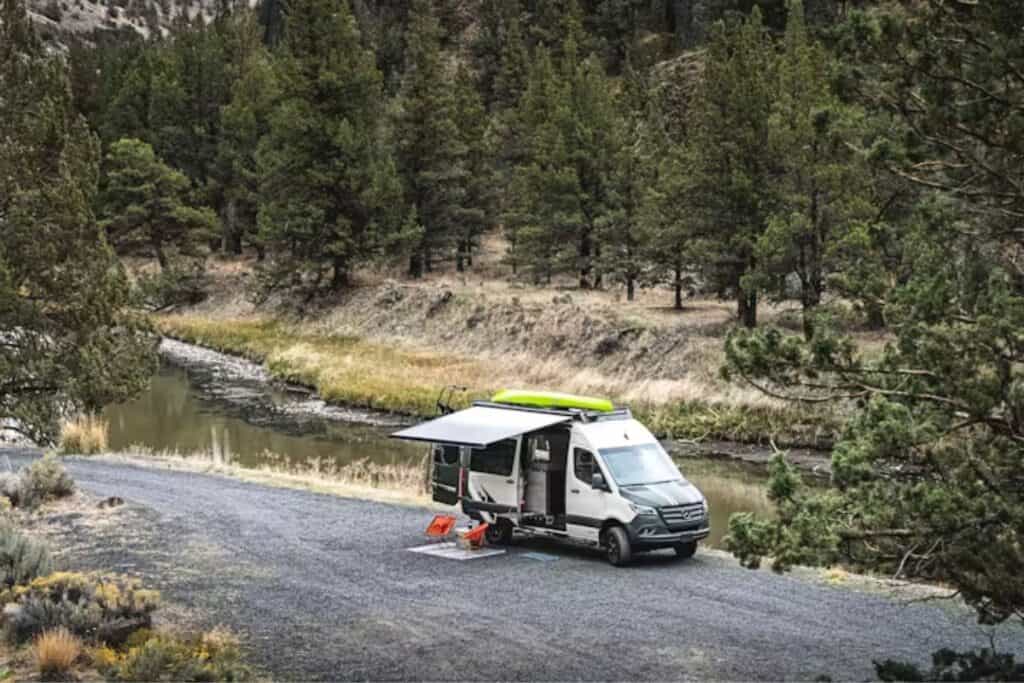
The Class B RV is one of the smallest and most challenging RVs you can live out of, however, it’s also one of the most flexible and freeing.
With typically less than 100 square feet to work with, Class B motorhomes force travelers to creatively optimize every inch of space and become true minimalists.
But in return for living tiny, owners gain the unmatched ability to adventure off-grid and discover beautiful natural landscapes inaccessible to larger full-size rigs.
While it won’t be a good fit for everyone or even for most, for those looking for the ultimate adventure vehicle there is no better option, as no other RV platform offers the nimbleness, fuel efficiency, and cozy comforts for one or two people to explore far-reaching vistas than the Class B.
So if you have the means and the necessary spirit for adventure, you should take the leap into full-time Class B living.
Recent Posts
When cruising down the highway in your RV, the last thing you want is a tire blowout! Not only is it dangerous, but RV tire replacement isn't cheap, costing $200 to $300 per tire. The good news,...
Nothing ruins an RV adventure faster than a breakdown with no way to fix it. Because of this, every RVer should have a well-stocked RV tool kit for those unexpected roadside emergencies and campsite...

